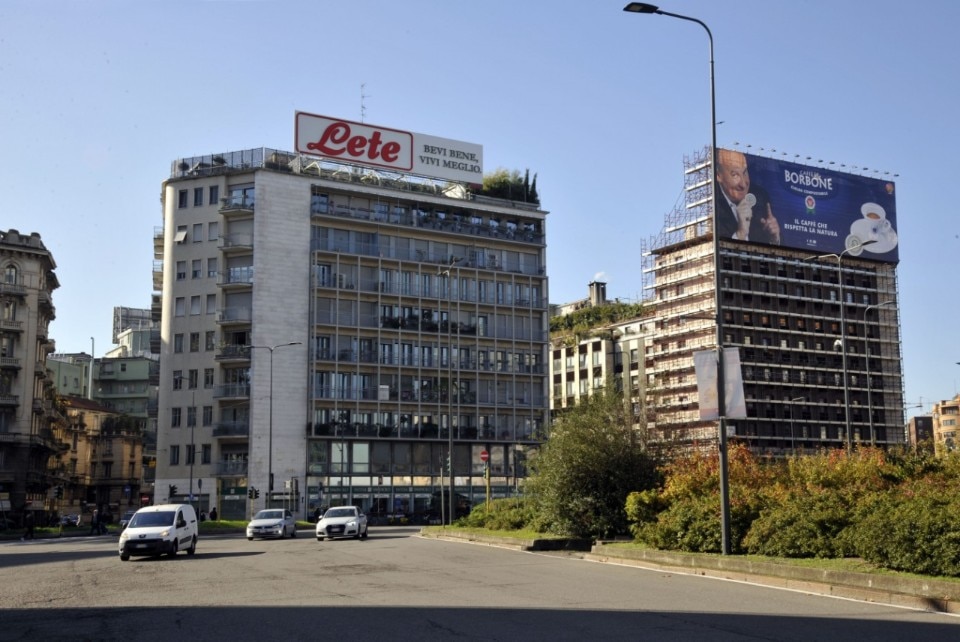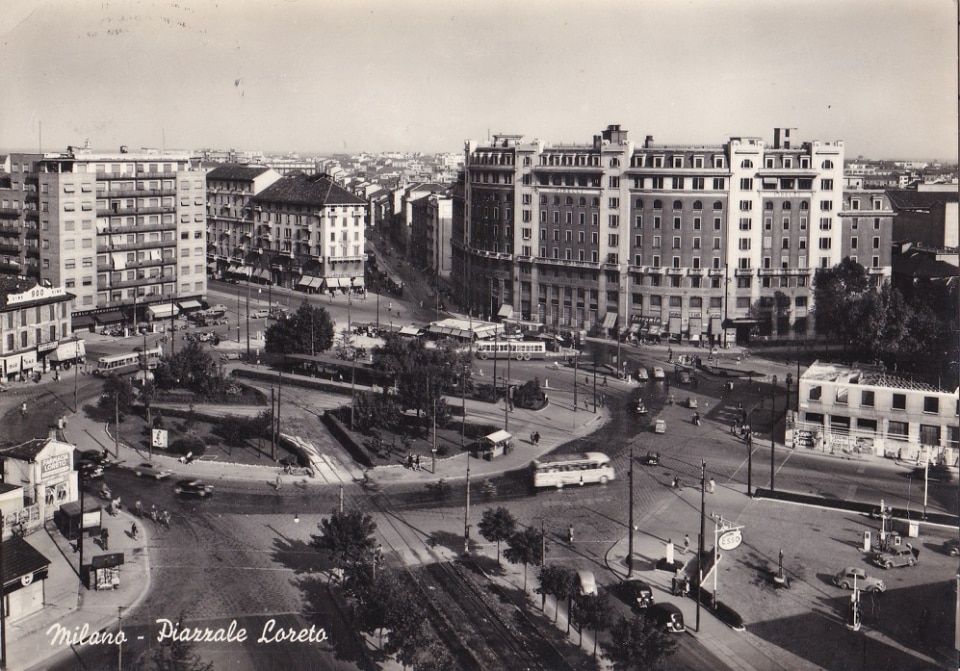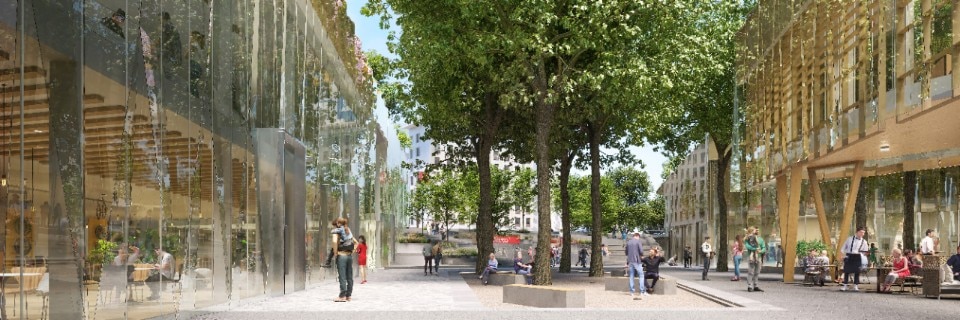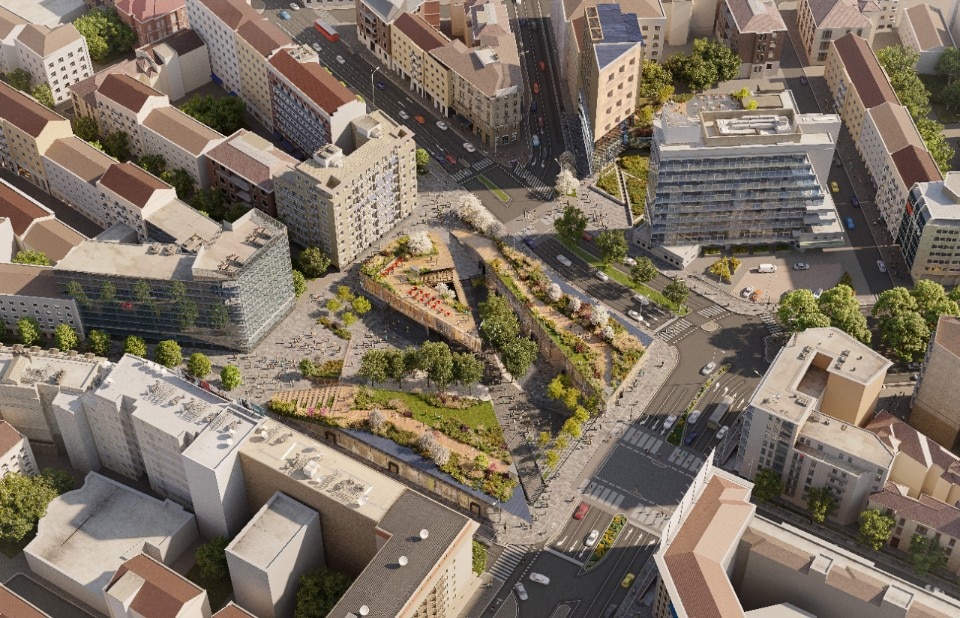Every six to eight months, a now-unsettling headline reappears on Milan’s digital platforms and newspapers: it is official—on XYZ date, construction will begin on LOC (Loreto Open Community). The announcement is followed by an enthusiastic recap—with tones increasingly muted as time passes—of the project’s key features. Born out of an international competition organized by C40 Reinventing Cities and the City of Milan, LOC will be “realized thanks to the plural contribution of Metrogramma Milano (Design Team coordinator), Mobility in Chain, Studio Andrea Caputo, LAND, Temporiuso, and Squarati Srl, aiming to become a new model of urban living in Milan that promotes public and collective space. LOC will transform Piazzale Loreto from a major traffic junction into a green, open-air square,” reads the Urbanlife website, “providing a seamless link between Corso Buenos Aires, Viale Monza, and Via Padova.”
What is missing from these promotional narratives is the simple, fundamental truth: this regeneration project is not about turning one public space into another. It is about turning a public square into a shopping center, a quintessentially private space, belonging moreover to a category in decline.

The winner of the Reinventing Cities competition is CETRUS-NHOOD, part of the Auchan Group, owned by the Mulliez family and specialized in a real estate sector that combines commercial spaces with ESG (Environment, Social, Governance) oriented forms of urban regeneration. Dressing it up with climbing vines and community workshops is no longer enough to keep promoting and spreading a type of space long recognized as anti-urban. It has to be completely reinvented, its very nature denied. And so, the two elevated levels that will rise across from Corso Buenos Aires are simply omitted from the narrative, as are the doubled volumes of the building stretching from Loreto to Via Porpora.
LOC is being promoted as a “modern green agora,” a “natural connection” between NOLO (North of Loreto, the archetypal neighborhood of Milanese gentrification) and the Buenos Aires-Porta Venezia-San Babila axis. According to the developers, it will deliver 10,000 square meters of public space with tall trees. This project is an emblematic example of how greenwashing is not just a somewhat pathetic real estate strategy; it is a dangerous tool in the hands of those shaping the future of cities, one that sustains a development model that is environmentally and socially self-destructive.
Who said this was the only alternative? If the goal was to make the square walkable, bike-friendly, and livable, the most sensible choice would have been to partially pedestrianize [...] Think of Place de la République in Paris [...] it remained entirely public.

As Charlotte Malterre-Barthes writes in On Architecture and Greenwashing: “Only by obscuring the ecological impact of construction activity and presenting a virtuous, eco-friendly face, capitalism can continue to uphold its exploitative practices and prevent real change. Typified by the much-lamented tree-adorned skyscrapers, the age of sustainability is manifested by delayed net-zero pledges, opaque ecolabels, unrealistic offsetting programs, cosmetic ‘reinvention,’ and questionable techno-fixes.”
If, in general, these narratives serve to distract from the fact that the construction industry accounts for 40% of global emissions, within the context of urban space production, their role is what urban geographer Tom Slater has called “the urbanism of false alternatives.” When residents push back against eco-luxury developments, against the privatization of public space, gentrification, and environmental impact, the response is always the same: that sustainable design is, at the very least, better than existing blight or neglect.
And so it goes in Loreto. Faced with protests and legal action from the civic group Abitare in via Padova—which has denounced rising housing prices in the multiethnic Via Padova neighborhood, a surge in evictions, and the sell-off of public housing on Viale Lombardia and Via Lulli, while calling for vacant buildings to be repurposed into affordable homes—the official answer is predictably dismissive. The social benefits and sustainability credentials of LOC, it is said, are obviously preferable to the traffic-clogged roundabout currently in place.
Who said this was the only alternative? If the goal was to make the square walkable, bike-friendly, and livable, the most sensible choice would have been to partially pedestrianize it at street level—a thoughtful landscape design that would have been both more affordable and more sustainable than the winning proposal, supported by a serious mobility study. Think of Place de la République in Paris, as Alessandro Benetti once noted in these very pages: it remained entirely public, became easier to cross, and evolved into an ideal space for gathering and protesting. Instead, we are getting a private building placed in the center of the square—an insertion that, from the outside, will erase the perception of a square altogether, making it feel more like a street. Its stepped terraces, which descend toward the underground level and may (hopefully) feature some trees, are being marketed as “the new public square.” But what we are really getting is a small, sunken space surrounded by retail—closed at night, potentially unsafe, and thus likely to require private security.

LOC emerges from a way of thinking that is increasingly outdated yet still underpins the logic of the Reinventing Cities competition itself: the assumption that the public sector cannot act without private investment. But private capital, by definition, must be profitable—and this means extracting as much value as possible from the city.
To break free from this paradigm, which undermines the authority of the public realm and compresses the scope of collective interest, it is worth recalling the radical clarity of Lacaton and Vassal. The Pritzker-winning duo demonstrated, in their design for Place Léon Aucoc in Bordeaux, that sometimes the best intervention is none at all: no structural changes, just small improvements and, above all, a commitment to maintenance, repair, and adaptation. A prioritization of the ordinary and the ongoing over the spectacular. No demolition, no excavation—unless truly necessary. Instead, public money and intelligence should be invested in alternative, less invasive paths forward.

Opening image: Metrogramma Milano srl, Andrea Caputo, MIC-HUB, LAND, Temporiuso, FROM, Piazzale Loreto requalification. Photo Courtesy Nhood Services Italy SpA


